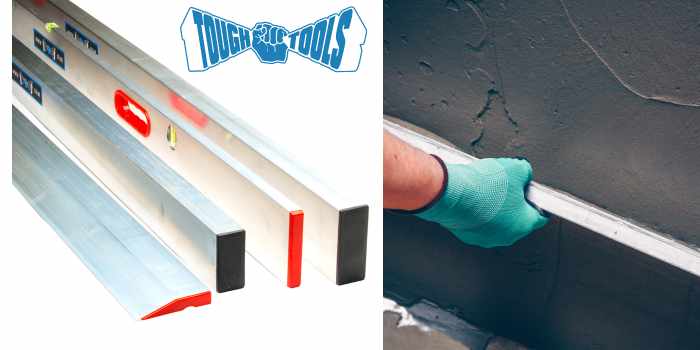Mastering the Art of Plastering: How to Use a Plaster Darby
Plastering is an essential skill in construction and home improvement, requiring precision and the right tools to achieve a smooth, professional finish. One such indispensable tool is the plasterers darby. In this blog post, we’ll explore what a plasterers darby is, what it is used for, and how to use it effectively.
What is a Plasterers Darby?
A plasterers darby is a long, flat tool made from aluminum or magnesium, used to smooth and level plaster, render, or concrete surfaces. The darby typically features handles on the back, allowing for better control and ease of use. Its primary function is to ensure a uniform, flat surface, eliminating high spots and filling in low spots during the plastering process.
What is a Plasterers Darby Used For?
The primary uses of a plasterers darby include:
- Smoothing and Leveling: Ensuring that plaster or render is applied evenly across a surface.
- Eliminating High Spots: Shaving down any high points in the plaster to create a flat finish.
- Filling Low Spots: Applying extra material to low spots to achieve a consistent surface.
- Initial Flattening: Often used after the material is applied with a trowel to achieve the initial flatness before finer finishing tools are used.
How to Use a Plaster Darby
Using a plaster darby effectively requires some practice and the right technique. Here’s a step-by-step guide:
- Prepare the Surface: Ensure that the surface to be plastered is clean and free of dust or debris.
- Apply the Plaster: Use a trowel to apply the plaster or render to the wall or surface.
- Position the Darby: Hold the darby with both hands by its handles, positioning it at the starting point of your work area.
- Smooth the Plaster: Gently press the darby against the plaster and move it in a back-and-forth motion. Use long, sweeping strokes to cover larger areas.
- Check for Flatness: Continuously check the surface for high and low spots, adjusting the pressure and angle of the darby as needed.
- Repeat as Necessary: If you encounter uneven areas, reapply plaster as needed and use the darby to smooth it out.
- Final Touches: After achieving a flat surface, allow the plaster to set slightly before using finer finishing tools for the final smooth finish.
Tips for Using a Plasterers Darby
- Keep It Clean: Regularly clean the darby to prevent plaster build-up, which can affect its effectiveness.
- Use Even Pressure: Apply consistent pressure to avoid creating new high or low spots.
- Practice: Mastering the use of a plasterers darby takes time and practice. Start on smaller areas before tackling larger projects.
Conclusion
A plasterers darby is an essential tool for achieving a smooth, professional finish in plastering and rendering projects. By understanding its purpose and learning how to use it correctly, you can ensure your plastering work is of the highest quality. Whether you are a seasoned professional or a DIY enthusiast, mastering the use of a plaster darby will significantly enhance your skills and the results of your projects.
We stock a variety of different darbies included a serrated edge and also flat edged for different surface applications.

